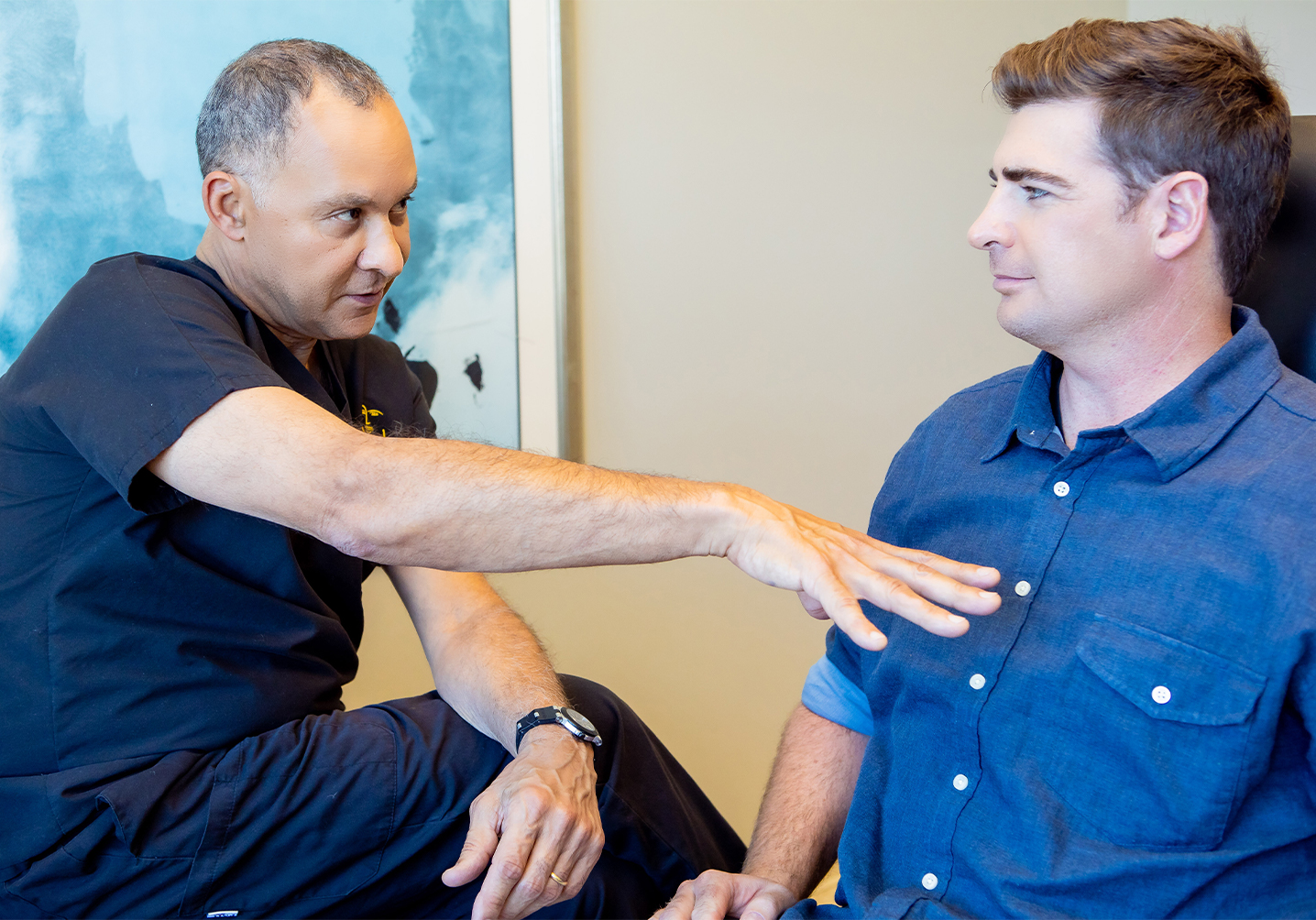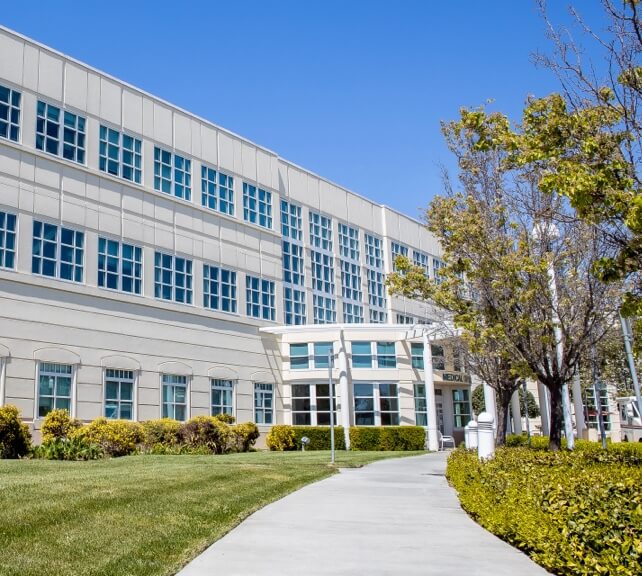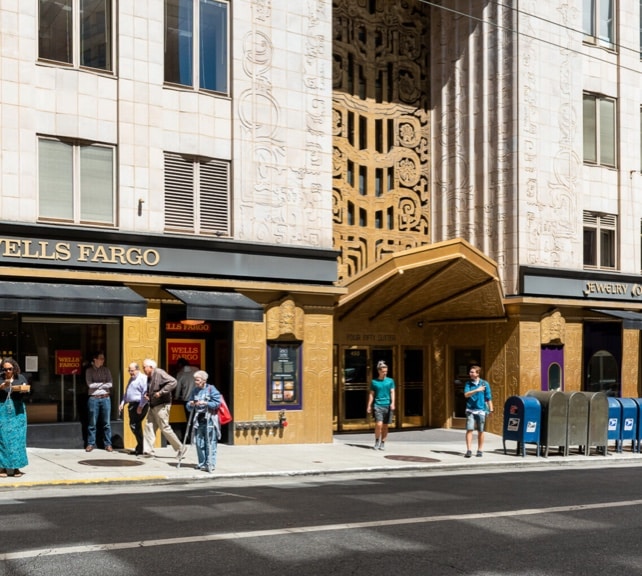There are many different causes for gynecomastia and the most effective treatment is gynecomastia surgery in San Francisco with Dr. Delgado.
When hormonal levels of testosterone and estrogen surge during puberty, low testosterone or high estrogen (the female hormone) can bring on female-like breast tissue growth. This is the primary cause of gynecomastia, which can occur in one or both breasts. In over 90 percent of cases, gynecomastia experienced as a result of puberty (pubertal gynecomastia) will resolve on its own. However, scientific studies show that if glandular breast tissue development has not resolved within two years, then it is not likely to resolve at all.
Another cause of male breasts can be attributed to the use of some drugs and medications, especially steroids., which is known as drug-induced gynecomastia. Hormone-secreting tumors, although rare, can also cause some enlargement. Once men start approaching their sixties, testosterone levels naturally decrease, which can result in breast enlargement. This is commonly known today as “low T” or andropause in men, which is similar to menopause in women.

WHAT IS GYNECOMASTIA? | LISTEN TO EXPERT DR. DELGADO, BOARD CERTIFIED DOCTOR, EXPLAIN.
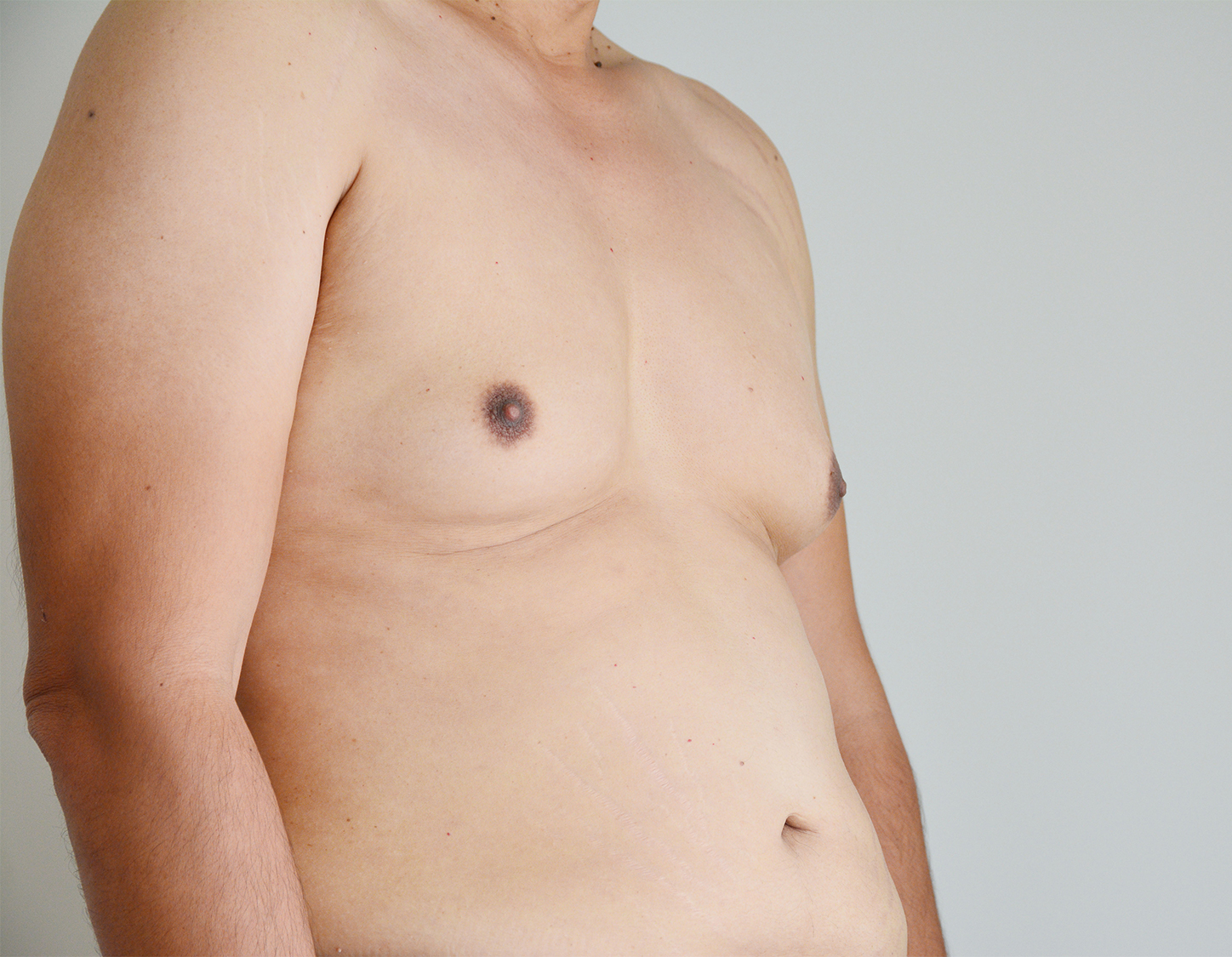
GYNECOMASTIA VS PSEUDOGYNECOMASTIA
Gynecomastia is defined by breast gland development. In contrast, pseudo gynecomastia is due to body fat accumulation, with insignificant gland mass present.
Gynecomastia most commonly develops during puberty and resolves within two years in 90 percent of cases. In the remaining 10 percent, gynecomastia is present for life. As previously mentioned, the next most common cause after puberty is steroid-induced gynecomastia, which occurs in bodybuilders or novices who use anabolic steroids. Additional, less common causes are other drugs and, rarely, hormone-secreting tumors. Thankfully, male breast reduction surgery is an effective cure for gynecomastia.
Pseudo gynecomastia is due to fat in the chest and, in general, the entire body is usually overweight. Since the size of the chest will change with weight fluctuation, an enlarged chest caused by pseudo gynecomastia can typically be resolved with weight loss.
In some instances, males can have gynecomastia with a variable amount of fat content. Sometimes it is difficult to diagnose this other than by the history of the condition.
DIFFERENT TYPES OF GYNECOMASTIA
Along with pseudo gynecomastia, there are also other forms including idiopathic gynecomastia which indicate that no cause has been found for the condition. Since gynecomastia can affect males of all ages, this can be further broken down into prepubertal gynecomastia, pubertal gynecomastia, and adult gynecomastia. Regardless, all forms of true gynecomastia will result in enlarged male breast tissue. In these cases, the best treatment for gynecomastia is often surgical treatment, or gynecomastia surgery.
DID YOU KNOW GYNECOMASTIA IS ALSO REFERRED TO AS…?
Gynecomastia is the medical term for this condition, and it is also referred to as enlarged male breasts. However, many people call this condition “man boobs” or “moobs.” This slang terminology can often be offensive or hurtful to those living with gynecomastia.
A DAY IN THE LIFE OF A MALE WITH GYNECOMASTIA:
Every day is a struggle for the man that lives with gynecomastia. Each day typically starts with the unwelcome sight of his chest in the shower, often creating a destructive effect on his ego and self-esteem. Men have learned to pick their clothing carefully so they are able to conceal their chests as best they can. Usually, they will opt for several layers of clothing, such as shirts with pockets, bulky sweaters, jackets, and dark colors to help conceal enlarged breasts. Most avoid lightweight fabrics and T-shirts, as they are too revealing.
The locker room at school poses a challenge for those with adolescent gynecomastia regarding sports, swimming, showers, and any other type of shirtless activity, usually causing young men with gynecomastia to try to avoid such situations entirely.
For men working in a climate-controlled environment dictating a shirt, tie, and jacket, going to work is not a problem. However, there are many men who have jobs outdoors doing physical labor, which can be miserable if the weather is hot. Gynecomastia sufferers will subject themselves to extreme physical discomfort in order to avoid the psychological torture caused by teasing and insensitive comments from their peers and co-workers regarding their breast enlargement.
Once the day is over, a man will often consider it to be a good day if there were no comments made about his chest. After the workweek ends, then the men get to deal with family outings, swimming pools, barbecues, dates, sports, and the beach. The gynecomastia sufferer must make special efforts to conceal his chest from others. Many times, it is easier to avoid the events altogether.
Feelings of shame, embarrassment, guilt, and inadequacy torment men with gynecomastia, and for most, it is an ever-present burden.

COMMON MEDICATIONS THAT CAUSE GYNECOMASTIA
There are some common medications that have been linked to gynecomastia, including the following:
Anti-Androgens– Medications used to treat prostate conditions and other medical conditions, can lead to gynecomastia. Some examples are finasteride (Propecia, Proscar), flutamide, and spironolactone (Carospir, Aldactone).
Androgens and Anabolic Steroids – These are sometimes used by athletes to enhance performance and build muscles.
AIDS Medication – Gynecomastia can develop in men who are positive for HIV receiving antiviral treatment. Efavirenz (Sustiva) is more commonly associated with gynecomastia than other AIDS medications.
- Anti-Anxiety Meds – Valium is common
- Tricyclic Antidepressant
- Some Antibiotics
- Ulcer drugs – Such as cimetidine (Tagamet)
- Heart Medication – Like digoxin
- Medication that Empties the Stomach – Such as metoclopramide (Reglan)
IS CANCER ASSOCIATED WITH GYNECOMASTIA?
One question that is often asked is if gynecomastia is connected with cancer. As far as male breast cancer is concerned, having gynecomastia does not put you at a significantly higher risk for developing breast cancer. However, it’s still important to be aware of this condition.
Gynecomastia can also occur in prostate cancer patients receiving antiandrogen (bicalutamide or flutamide) treatment.
If you are concerned about male breast cancer, please be sure to consult with a medical professional.

ALCOHOL AND STREET DRUGS THAT CAUSE GYNECOMASTIA
It is known that alcohol and some street drugs can contribute to male breast enlargement, including:
- Alcohol
- Amphetamines
- Marijuana
- Heroin and Methadone
TREATMENT OPTIONS FOR GYNECOMASTIA
While true gynecomastia requires surgery in Marin County to properly treat it, other causes of gynecomastia can sometimes be treated in different ways. These treatment options may include:
MEDICATION
Gynecomastia may be treated with medications such as raloxifene (Evista) and tamoxifen (Soltamox). Hormone therapy can also be used to increase testosterone and help balance the hormones in the body.
DIET AND
EXERCISE
Decreasing the body fat deposits in the male breasts can be achieved with a healthy diet and targeted exercise. Cardio and swimming are helpful, and chest exercises such as working on a rowing machine, bench presses, and push-ups.
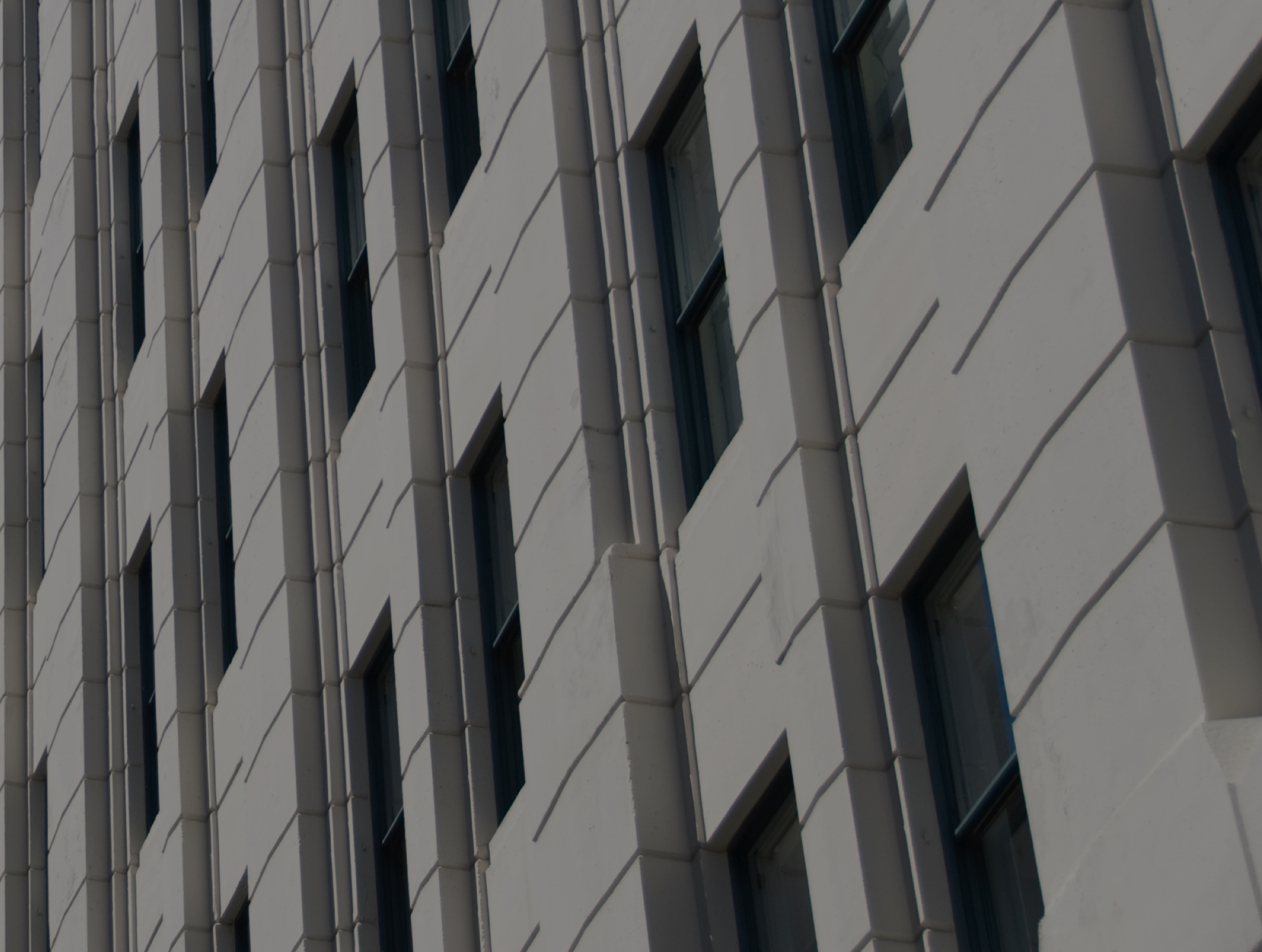

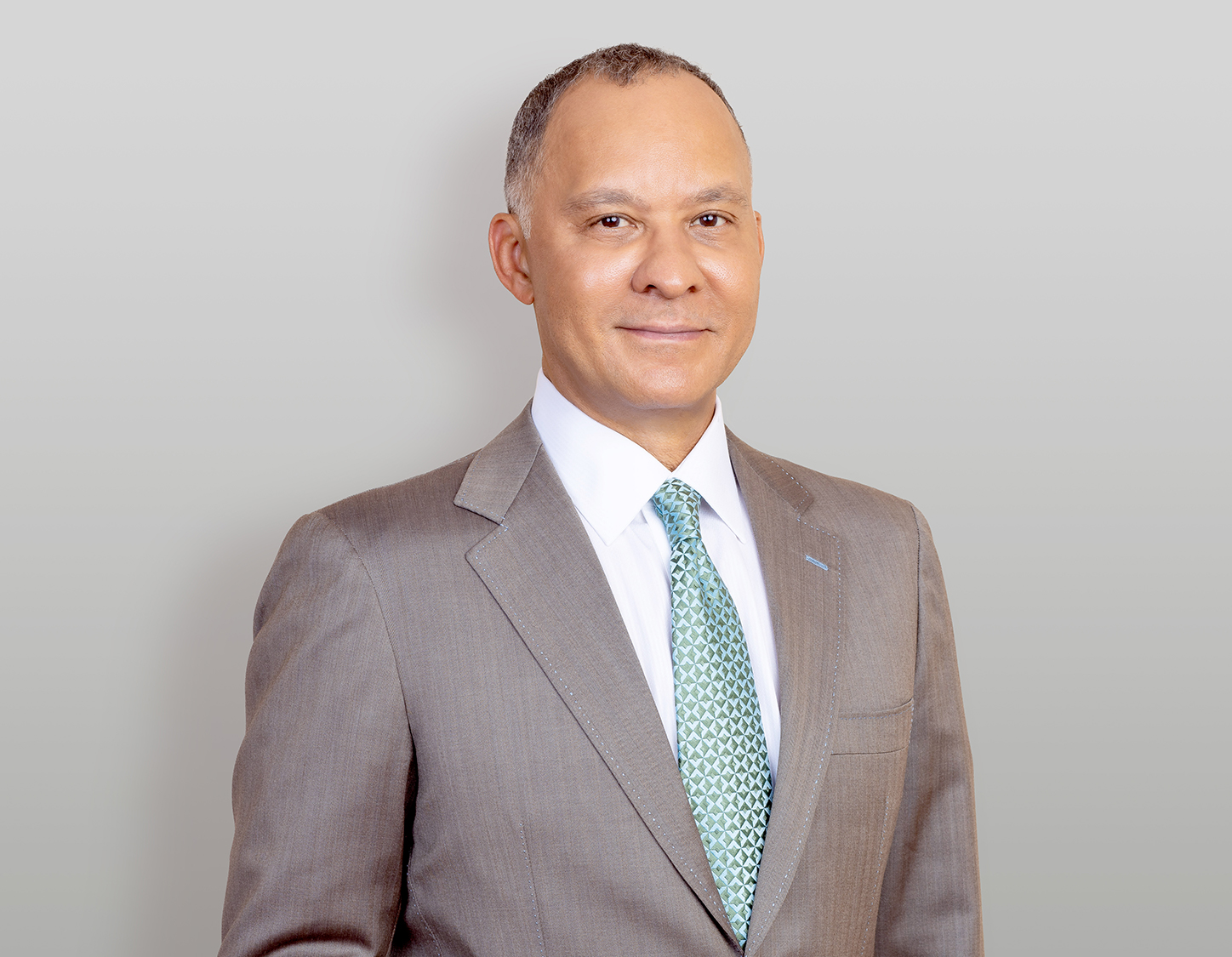
WHY CHOOSE DR. DELGADO?
Dr. Delgado is a San Francisco-based plastic surgeon and has focused on gynecomastia surgery since 1990. Indisputably an authority in the surgical resolution of gynecomastia, he has performed thousands of male breast reduction surgeries and has been featured in treating patients from all over the world on international and local television documentaries and programs. Patients living in Santa Rosa, Napa Valley, and Sonoma County only have to travel a couple of hours or less to receive his expert care.
Dr. Delgado is contacted frequently by other physicians for expert advice, and the most difficult cases are often referred to him. To enable men to consult with him from around the globe, he conducts virtual consultations daily—for both patients near and far. His practice has evolved to providing gynecomastia revision surgery for nearly 40-plus percent of all procedures.
It is Dr. Delgado’s personal mission and passion to help men who suffer from gynecomastia; he has even developed a website dedicated to focusing on the concerns of men with this condition: gynecomastia-specialist.com. There, you can read more about his surgical approach for adult and teen patients, bodybuilders, revision cases, and pseudo gynecomastia.
One of San Francisco’s most iconic features is its historic cable car system. Established in the late 1800s, only three lines remain of the original 23. It has undergone reconstruction and refurbishing multiple times in its history, most recently between 2017 and 2019. Two routes still exist downtown in the Union Square district and a third route runs along California Street. The San Francisco cable car system is more popular as a tourist attraction rather than being used by local commuters – it’s also listed on the National Register of Historic Places and as a National Historic Landmark. The San Francisco Cable Car Museum, located on Washington Street, is dedicated to its history. The offices of Dr. Miguel Delgado are located in the Union Square district, just two blocks from the California Street cable car route. Dr. Delgado’s secondary location is in Novato, Marin County, 28 miles away.

